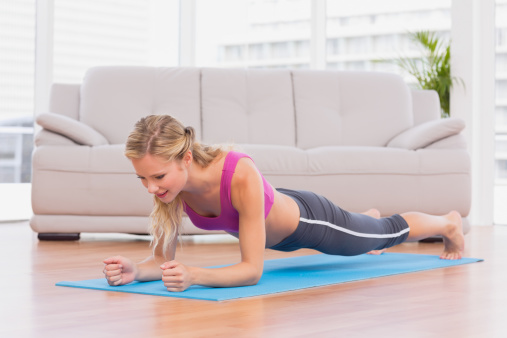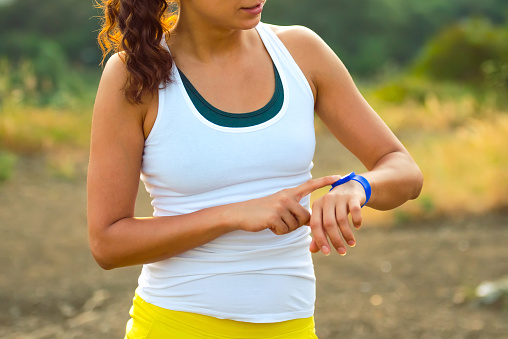Foam Rolling: Your Sore Muscle Solution
Article posted in: Fitness
If your knees ache, your hips are tight, you sit all day, or you just feel stiffer than you used to, you may be able to get many of the pain-relieving, joint-loosening relief of a massage in your own home without a personal masseuse. Instead, you’ll need a foam roller to perform “self-myofascial release.”
Fascia are the connective tissues that surround your muscles. And whether it’s through inactivity, injury or inflammation, fascia eventually dry out and form “fibrous adhesions”—knots, basically. This can cause tightness, a loss of range of motion, and can compromise your ability to move and recover from exercise.
Rolling a $10-30 dense foam cylinder (or a hard ball, like a lacrosse ball) over these adhesions has been used by trainers and therapists to “release” the fascial adhesions—that is, it breaks up the knots to loosen up the soft tissue and return it to its natural, supple state.
In small studies, rolling muscles has been shown to reduce muscle soreness one, two and three days after a hard exercise session, and also increased range of motion in joints. In one study, participants increased their knee range of motion—how far the knee can bend—by up to 20 percent. In another study, three minutes of rolling the hips combined with stretching helped increase hip flexibility more than stretching alone.
If you’ve got pain, aches or tightness in your knees, hips or legs, foam rolling may be for you—but only after speaking with a doctor. Pain is no joke, and it’s your body’s signal that something is wrong; only a doctor can tell you if it’s something more serious.
If your doctor gives you the OK to roll, start with a softer, lower-density roller, and take note: Foam rolling can be a bit uncomfortable. It doesn’t feel like life-ending, garment-rending pain, but breaking up knotted masses of soft tissue means warming them up, creating friction, and ultimately breaking them, which can be uncomfortable during the act. But once you’re finished, there’s a rush of relief that makes many participants find the overall experience enjoyable. Here are three ways to start out rolling. For each, try these strategies for three sessions per week to start, or as recommended by your doctor.
For achy knees, try rolling your quadriceps muscles, found on the fronts of your thighs. Lie face-down with the roller under your thighs with your legs straight. Prop yourself up on your elbows and forearms and lift your feet off the floor so your legs are straight and the weight of your legs is on the foam roller. Twist your left hip up so that your right thigh is on the roller alone. In this position, slowly roll the roller up and down the front of your thigh. If you feel particular tightness anywhere in the quadriceps, hold the roller there for a minute or roll back and forth slightly over that spot to help ease the tightness. Continue rolling on this leg for 60 seconds. Rest for 30 seconds, then repeat on your left leg. Rest for 30 more seconds, and do each leg one more time. In the study described above, this rolling strategy created an increased knee range of motion of up to 20 percent.
Knee discomfort, especially when walking or running, can also be caused by a tight iliotibial (or IT) band. This thick band of tissue basically runs down the outside of the thigh, and functions to stabilize your knee. It can get really tight, so rolling the IT band can be pretty uncomfortable—but the relief after is astonishing. To roll your IT band, lie on your left side propped up on your left elbow with the roll under the side of your left thigh. Your right knee can be bent and your foot on the floor just in front of your left leg—this will provide support and balance as you roll. Using your elbow and right foot to move your body, roll slowly along the side of your thigh for 60 seconds, pausing at any spots that are extra tight or uncomfortable. Rest for 30 seconds, then flip over and repeat on your right IT band. Rest for 30 more seconds, and do each leg one more time.
If you sit a lot, have lower back or butt pain or walk with “duck feet,” try rolling your piriformis, a small muscle found behind your hip that is partially responsible for external rotation of the leg, and is often related to sciatic pain. To roll on the piriformis, sit on the roller with bent knees, feet flat on the floor. Support yourself by placing your left hand on the floor behind you. Cross your left leg so that your ankle is just above your bent knee. Place your right hand on the left ankle, and lean so that the roller is directly beneath your left butt cheek. Roll back and forth slowly over this area of the butt for 30 to 60 seconds. Rest for 30 seconds, then switch sides and roll for 30 to 60 seconds more. Repeat once more on each side.














